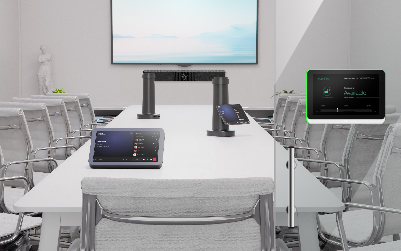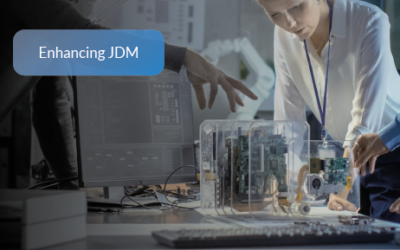
eDP Made Simple: Quick Start Guide with Expert’s Tips
Introduction to eDP
Welcome back to our Quick Start Guide series! In our previous installments, we delved into the world of MIPI, a high-speed interface crucial in mobile devices and small devices, and LVDS, ideal for larger device screens. Today, we’re exploring another key player in the technology landscape – eDP, or Embedded DisplayPort. This high-speed interface is particularly important in embedded systems, notebooks, and medium-sized device screens. But what exactly is eDP, and why is it important? Let’s dive in.
What is eDP?
eDP, or Embedded DisplayPort, is a high-speed interface standard designed by VESA (Video Electronics Standards Association). It is a type of DisplayPort that is specifically designed for embedded systems, such as laptops and other portable devices. eDP offers several advantages over older interface standards, including lower power consumption, higher resolution support, and advanced features like panel self-refresh (PSR).
When and Where to Use eDP?
eDP, or Embedded DisplayPort, is a high-speed interface standard designed by VESA (Video Electronics Standards Association). It is a type of DisplayPort that is specifically designed for embedded systems, such as laptops and other portable devices. eDP offers several advantages over older interface standards, including lower power consumption, higher resolution support, and advanced features like panel self-refresh (PSR). As a general rule of thumb when selecting an interface for Industrial PCs (IPC), eDP is generally suitable for medium-sized device screens when choosing display interface technologies.
Features and Benefits of eDP
eDP comes with a host of benefits that make it a top choice for display communication. Here are some key features:
- High-Speed Interface: eDP can signal data quickly, supporting high resolutions and frame rates. This makes it capable of handling a large amount of data and supporting high-speed applications such as video transmission.
- Low-Power Operation: eDP is designed for low power consumption, making it an energy-efficient choice for battery-powered devices.
- Advanced Features: eDP supports advanced features like panel self-refresh (PSR), which can further reduce power consumption by allowing the display to refresh itself without assistance from the CPU or GPU when the image is static.
Practical Insights
Optimizing eDP Interface for Quality Display When it comes to implementing eDP in your projects, there are a few practical tips to keep in mind:
- Cable Length: The ideal cable length for eDP to ensure quality display is 30 cm. Keeping the distance between the eDP transmitter and the receiver within this range can help maintain signal integrity and reduce potential interference.
- Signal Degradation: As with any type of data transmission, the signal quality can degrade over distance. This is due to factors like resistance, capacitance, and inductance within the cable. By keeping the cable length to a minimum, you can help to maintain the integrity of the signal and reduce potential interference.
- Electromagnetic Interference (EMI): Longer cables can act as an antenna, picking up electromagnetic interference from the environment. This can add noise to the signal, further degrading its quality. A shorter cable length reduces the risk of EMI.
- Signal Reflections: In high-speed data transmissions like eDP, signal reflections can become a significant issue with longer cables. These reflections occur when the signal encounters a change in impedance, such as at the connection between the cable and the receiver. The reflections can travel back along the cable and interfere with subsequent signals. By keeping the cable length to a minimum, you can help to reduce the impact of signal reflections.
- Power Loss: Longer cables can also lead to power loss due to the resistance of the cable. This can affect the voltage level at the receiver end, potentially causing issues with the display. A shorter cable length helps to minimize this power loss.Please note that the ideal cable length can vary depending on the specific application and environment. It’s always a good idea to test the system under actual operating conditions to determine the optimal cable length.
- Cable Quality: The quality of the cable is important to handle the voltage required by eDP. Using a high-quality cable can ensure stable voltage delivery, reducing the risk of display issues caused by voltage fluctuations.
- Material Quality: High-quality cables are often made of superior materials that can handle higher voltages without degradation or failure. This includes the conductive material (such as copper or silver) used for the signal lines, as well as the insulating material that surrounds them.
- Signal Integrity: High-quality cables are designed to maintain signal integrity over the length of the cable. This includes features like shielding to protect against electromagnetic interference, as well as controlled impedance to prevent signal reflections. Both of these factors can affect the voltage level at the receiver end, potentially causing display issues.
- Durability: High-quality cables are typically more durable and resistant to physical stress. This includes resistance to bending, twisting, and pulling, as well as resistance to environmental factors like temperature and humidity. A cable that fails physically can lead to voltage issues and other problems.
- Connector Quality: The quality of the connectors at each end of the cable can also affect the voltage handling capability. High-quality connectors provide a reliable, low-resistance connection to the transmitter and receiver, ensuring that the voltage level is maintained.
- Safety: High-quality cables are more likely to have adequate insulation and other safety features to prevent short circuits, electrical shocks, or other hazards that could occur if the cable is unable to handle the voltage.
Conclusion
eDP is a powerful interface technology that’s shaping the future of display communication. By implementing the expert’s tips from this article, you can ensure that your eDP signals will deliver high-quality display performance. With its high-speed capabilities, low-power operation, and advanced features, it’s no wonder eDP is becoming a popular choice in the tech industry, especially for embedded systems and portable devices. Stay tuned for our next Quick Start Guide, where we’ll explore another key interface technology: LVDS.
For more detailed information on how eDP compares with other interface technologies like MIPI and LVDS, check out our comprehensive comparison article – MIPI vs. eDP vs. LVDS.
Primax and LV-Tron Announce Strategic Partnership to Revolutionize Smart Meeting Solutions
Primax Electronics and LV-Tron (a division of IAdea) have officially announced their strategic partnership to invest in and develop cutting-edge smart meeting solutions. This collaboration aims to position both companies as leaders in the smart meeting industry, with...
Understanding SCEP: Its Role in Android Security
Understanding SCEP: Its Role in Android Security Simple Certificate Enrollment Protocol (SCEP) plays a vital role in digital security. Within Android, SCEP has become an essential tool, simplifying the once complex process of certificate enrollment. This article...
802.1X over Ethernet: A Key Solution for a More Secure Network
802.1X over Ethernet: A Key Solution for a More Secure Network Introduction to 802.1X over Ethernet In an era where network security is paramount across various industries, understanding and implementing robust security measures is essential. Last time, we delved into...
IEEE 802.1X Explained: A Plainspeak Guide to Securing Your Network
IEEE 802.1X Explained: A Plainspeak Guide to Securing Your Network Introduction to 802.1X 802.1X (The "X" is typically capitalized) is a cornerstone of modern network security and one of the most widely adopted security measures today. Here's why: Popularity: 802.1X...
A Step-by-Step Guide to Understanding Hardened Android
A Step-by-Step Guide to Understanding Hardened Android Introduction to Hardened Android In the world of mobile operating systems, Android stands out for its open-source nature, which allows for extensive customization. However, this flexibility can sometimes lead to...
Revolutionizing Business Collaboration with LV-Tron’s Immersive Smart Conference Rooms
rRevolutionizing Business Collaboration with LV-Tron's Immersive Smart Conference Rooms Introduction: Unveiling the Power of Smart Conference Rooms In the dynamic landscape of the digital age, the traditional conference room has been transformed into a "smart...
Android vs Windows: A User’s Guide to Choosing the Right OS
Android vs Windows: A User's Guide to Choosing the Right OS Choosing the right operating system for industrial PCs is crucial. This article provides a comprehensive comparison between Android and Windows, focusing on CPU choices, memory usage, and storage usage....
Joint Development Manufacturing (JDM): The LV-Tron Advantage
Joint Development Manufacturing: The LV-Tron Advantage In the tech industry, Joint Development Manufacturing (JDM) is a game-changer. It offers numerous benefits such as cost savings, faster time to market, and access to specialized expertise. But at LV-Tron, we don't...
LVDS Made Simple: Quick Start Guide with Expert’s Tips
LVDS Made Simple: Quick Start Guide with Expert’s Tips Introduction to LVDS Welcome back to our Quick Start Guide series! We've previously explored the high-speed interfaces of MIPI and eDP, crucial in mobile devices and embedded systems respectively. Today, we’re...
MIPI Made Simple: Quick Start Guide with Expert’s Tips
MIPI Made Simple: Quick Start Guide with Expert's Tips Introduction to MIPI Welcome to our Quick Start Guide series! In this first installment, we’re diving into the world of MIPI, or Mobile Industry Processor Interface. This high-speed interface is a key player in...
Conference Room Technology 2023: The Innovations You Can’t Ignore
Conference Room Technology 2023: The Innovations You Can't Ignore As we navigate the digital era, the landscape of conference room technology is evolving at an unprecedented pace. This rapid progression has ushered in a host of new software, integrations, and...
Overcoming Challenges in Shifting from Traditional to Hybrid Meetings
Overcoming Challenges in Shifting from Traditional to Hybrid Meetings The digital era has ushered in a new trend of hybrid meetings, which involve both internal employees and external teams from other companies. These meetings offer significant benefits, including...
Smart Meeting Room
The Essential Hardware for a Smart Meeting Room The Rising Trend of Smart Meetings: Embracing the Digital Era According to the 63rd International Meetings Statistics Report released by the Union of International Organizations (UIA) in 2022, the number of meetings is...
Understanding Android Industrial PCs: A Detailed Overview
Understanding Android Industrial Panel PCs: A Detailed Overview In the rapidly evolving world of industrial automation, Android Panel PCs have emerged as a game-changer. These powerful devices are transforming the way industries operate, offering unparalleled...
Comprehensive AIoT Industrial Computer Terminology Guide
Discover Optimized Solutions for Your Business Advantages. Contact Us Today!















